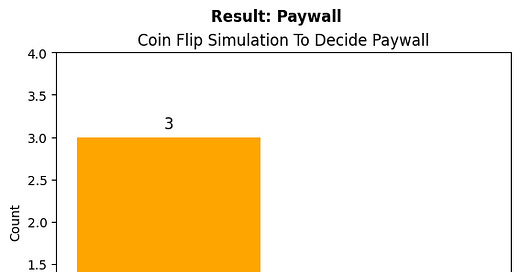How a Nobel physicist saw productivity—and why it matters for us now
William Shockley’s 1957 paper anticipated modern economics, task automation, and the subtle ways our skills shape our lives.
There is a paper by William Shockley, “On the Statistics of Individual Variations of Productivity in Research Laboratories” (1957), that I often bring up to my podcast guests because of a particular part of it. I’ve read it off and on for several years now, and I wanted to share it with you. This is my deep dive breaking it down for a broader audience. I also connect it to David Autor’s later work on routine versus nonroutine tasks, and computers impacting both. And then I offer my own thoughts along the way. I even asked Cosmos what he thought and he gave me two juicy paragraphs which I share.
Like I said, though, I often ask the guests questions inspired by just one part of the paper, and thus listeners and guests don’t have the full context, I wanted to take you through it step by step. I think it maybe has a lot to offer us collectively as a society at this stage in economic history, but I also think about what it means about me, about my own production function. If I might gently adapt the Serenity Prayer here without too much offense,
Lord, grant me serenity to accept the inputs I cannot change,
the courage and clarity to change those I can,
and the wisdom to know the difference.
As always, though, three coin flips decide whether a post will be paywalled. Best two out of three.
And heads it is. Thank you again for being a subscriber. It is sincerely appreciated. I hope you like this explainer of one of my favorite papers.
So who even was William Shockley?
William Shockley, born in London but raised in Palo Alto, California, was an American physicist whose innovations reshaped the technological landscape. After attending Caltech for his undergraduate studies, Shockley pursued a PhD at MIT where he established a strong academic foundation that would later propel him into groundbreaking research at Bell Labs. His most significant achievement—and what earned him the Nobel Prize in Physics in 1956 alongside John Bardeen and Walter Brattain—was the invention of the transistor, a device essential to modern electronics and foundational to the digital age.
Shockley’s tenure at Bell Labs was marked by his unconventional management style, characterized by an intense, demanding approach aimed at cultivating high-performance teams. This approach is echoed in his the 1957 paper, “On the Statistics of Individual Variations of Productivity in Research Laboratories,” which I will be discussing. It explores why productivity among scientists can vary enormously. Shockley seemed driven by intellectual curiosity and perhaps some frustration at structural inefficiencies—particularly salary scales that didn’t appropriately reward top talent—making this paper stand out for both its statistical description of workers, his deductions about the aggregate scientific production function, and the structure of wages for scientists.
i tell my students that economics is the study of three things: 1) what are we going to make. 2) how are we going to make it. 3) how are we going to share it. And what makes Shockleys paper interesting is that it seems to be about all three. So let’s dive into. What’s the main point of his paper?
Keep reading with a 7-day free trial
Subscribe to Scott's Mixtape Substack to keep reading this post and get 7 days of free access to the full post archives.





